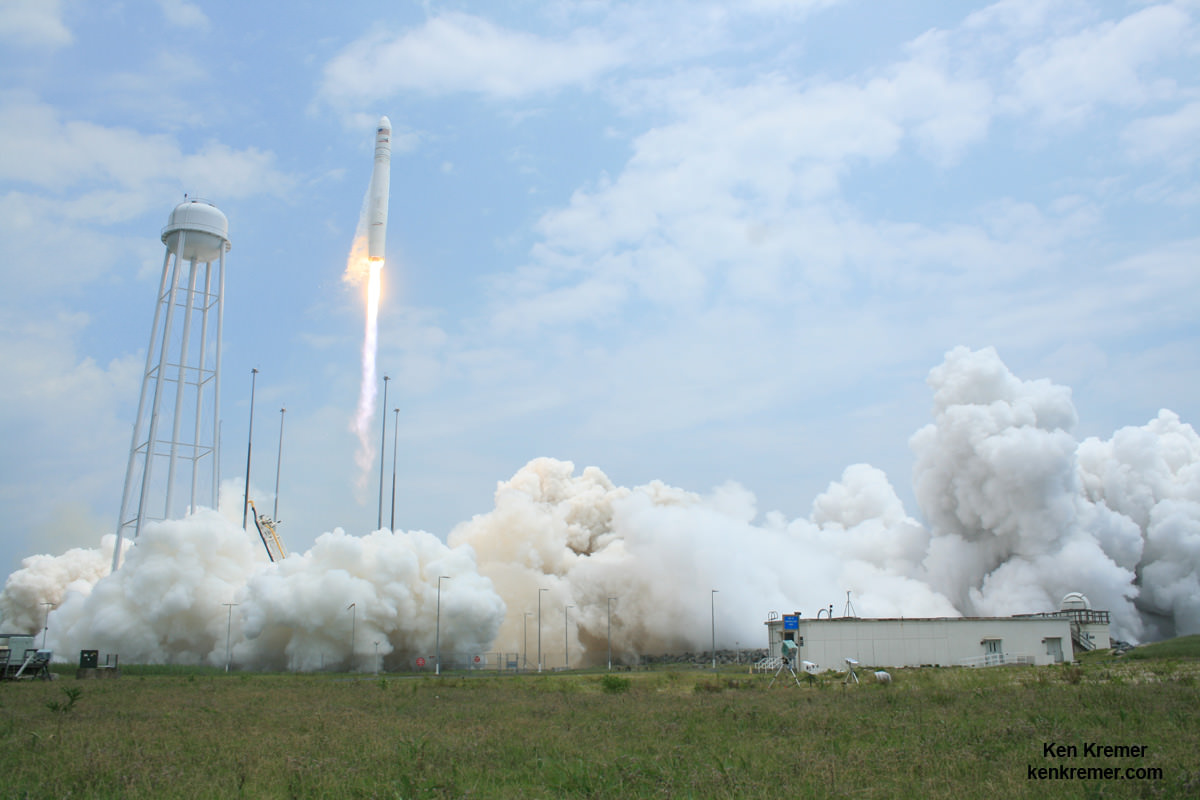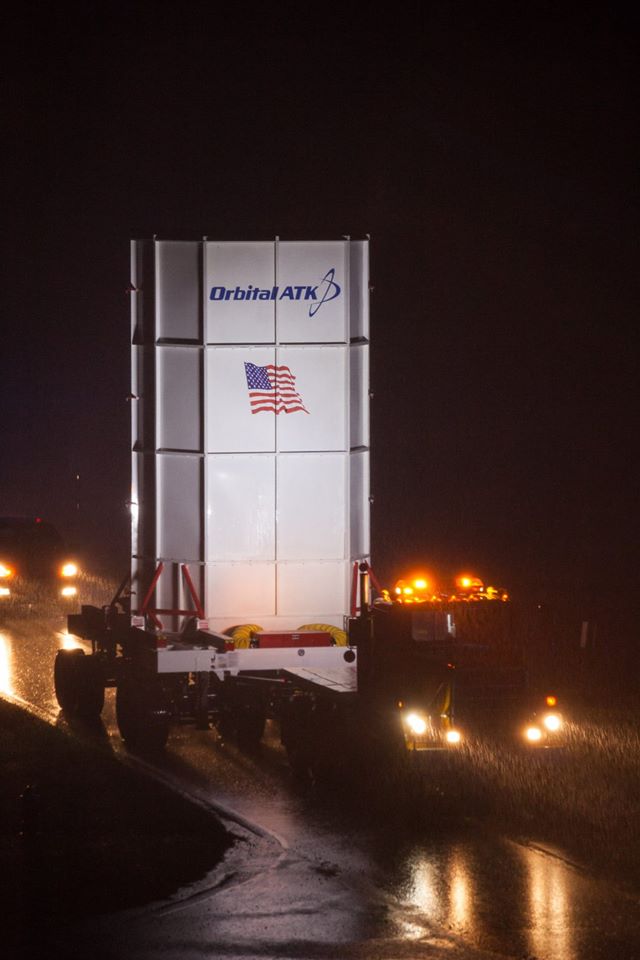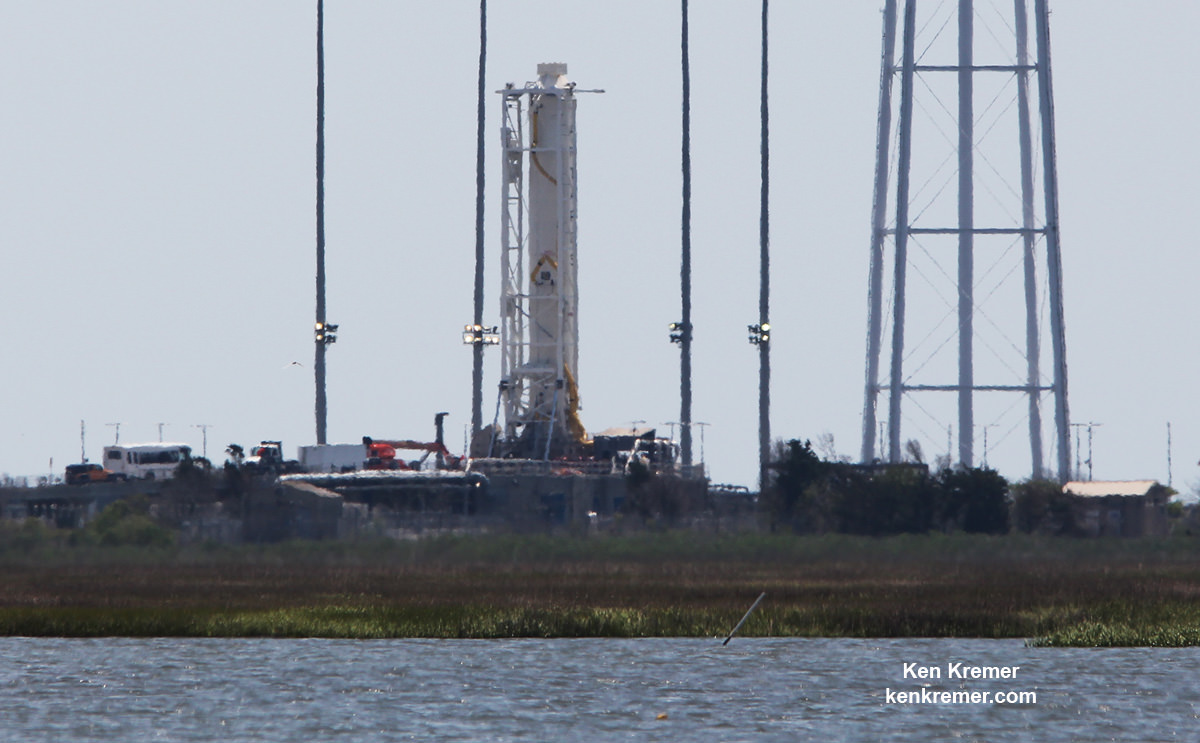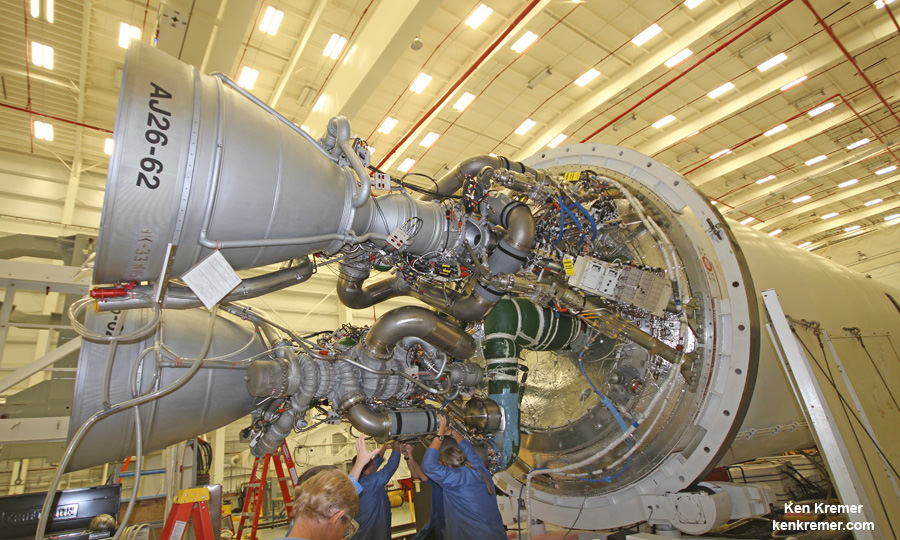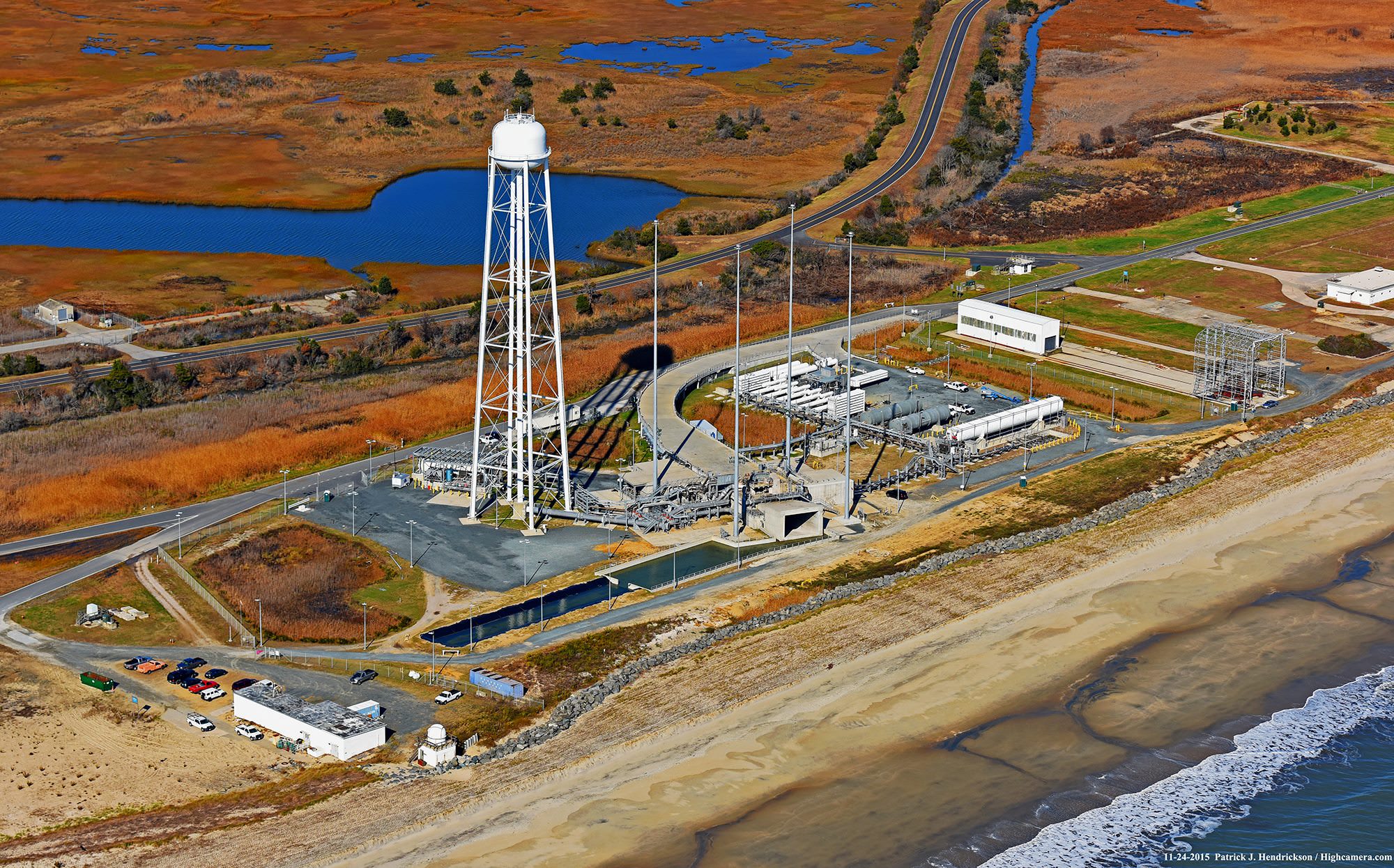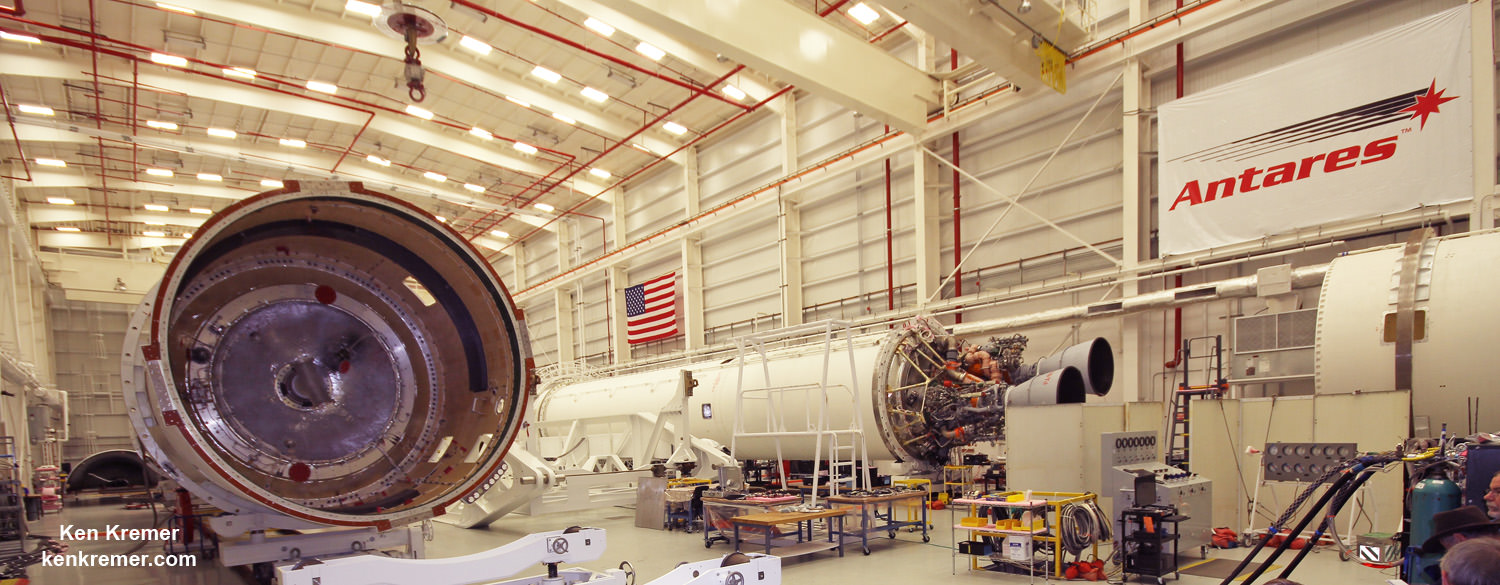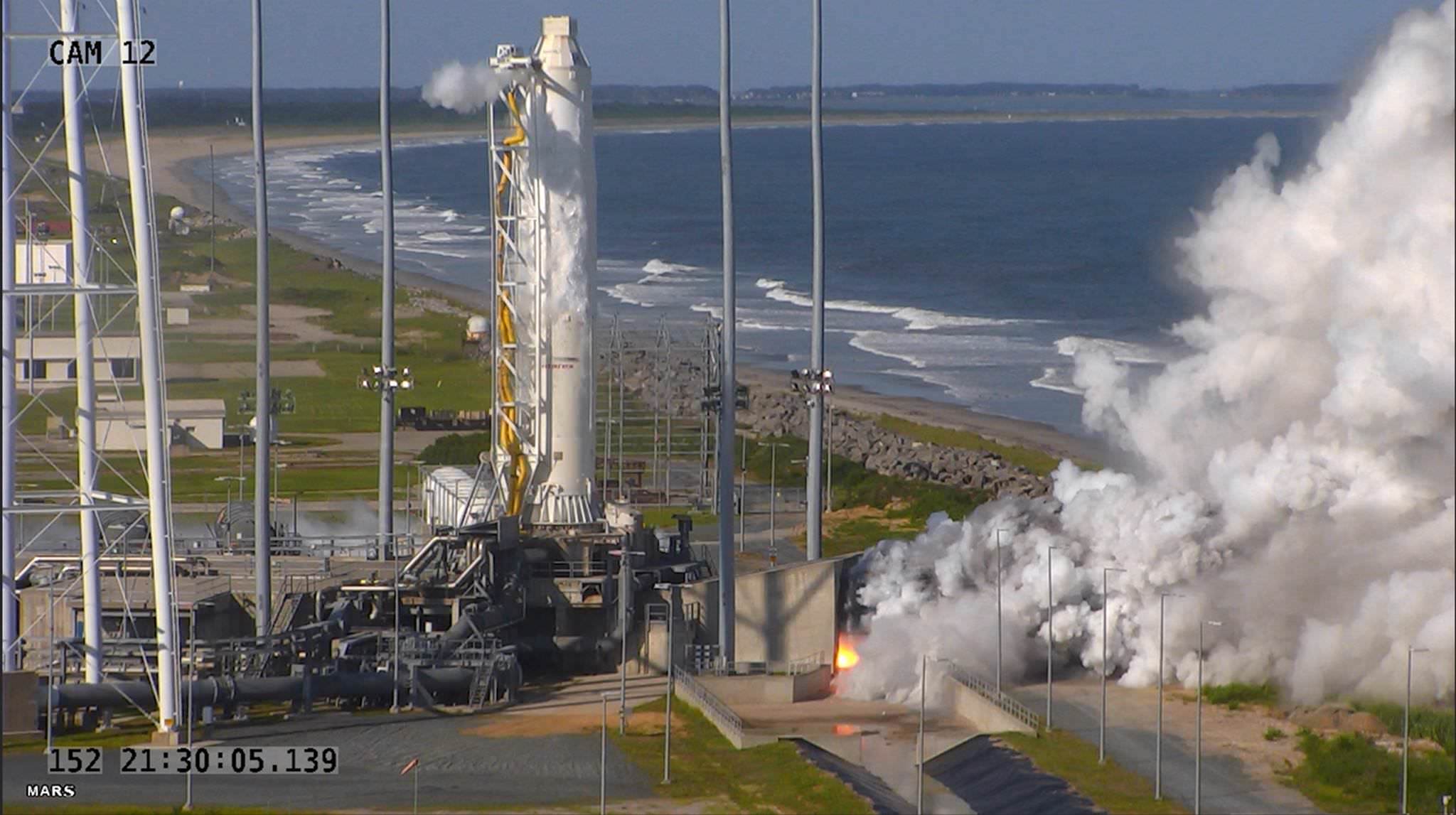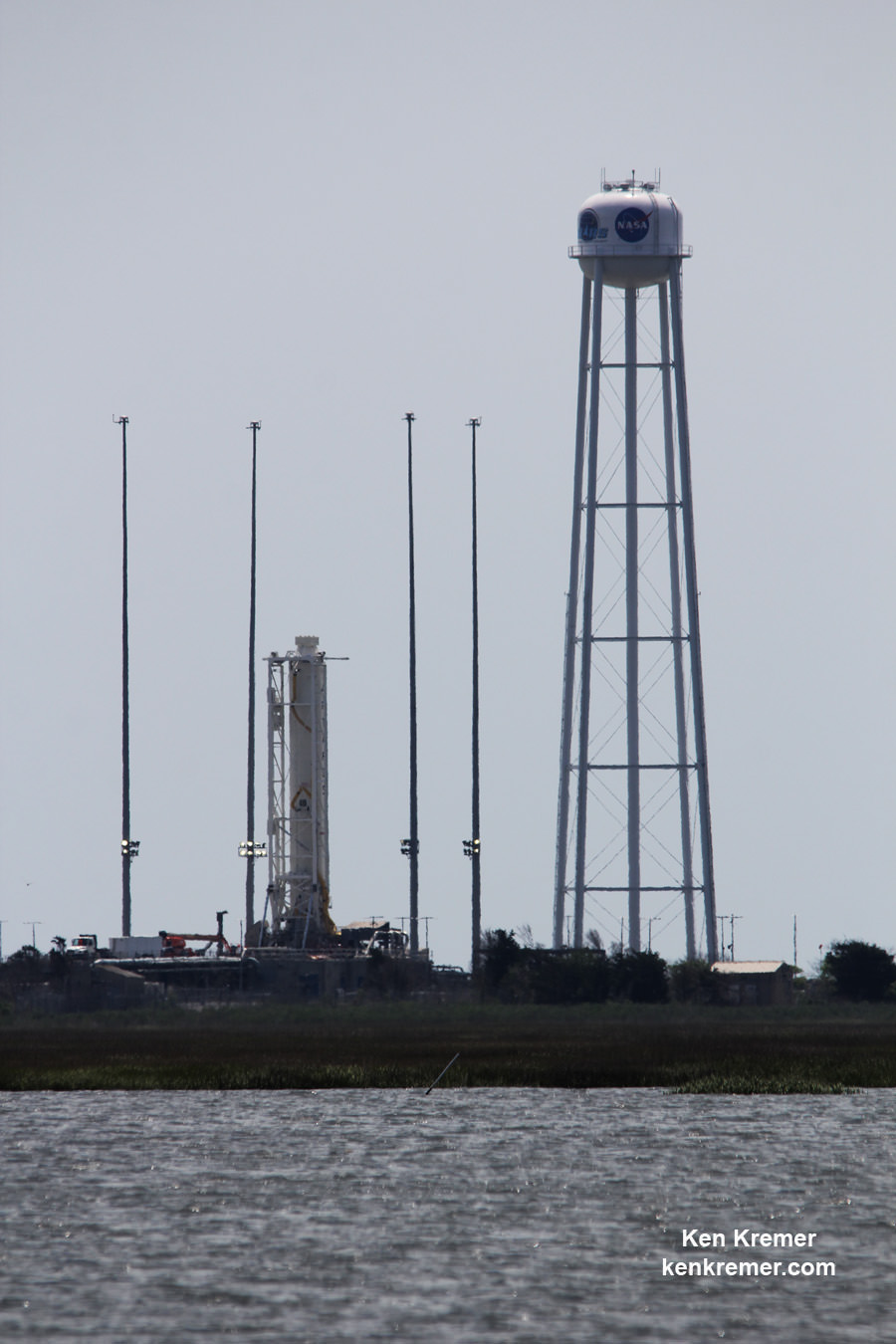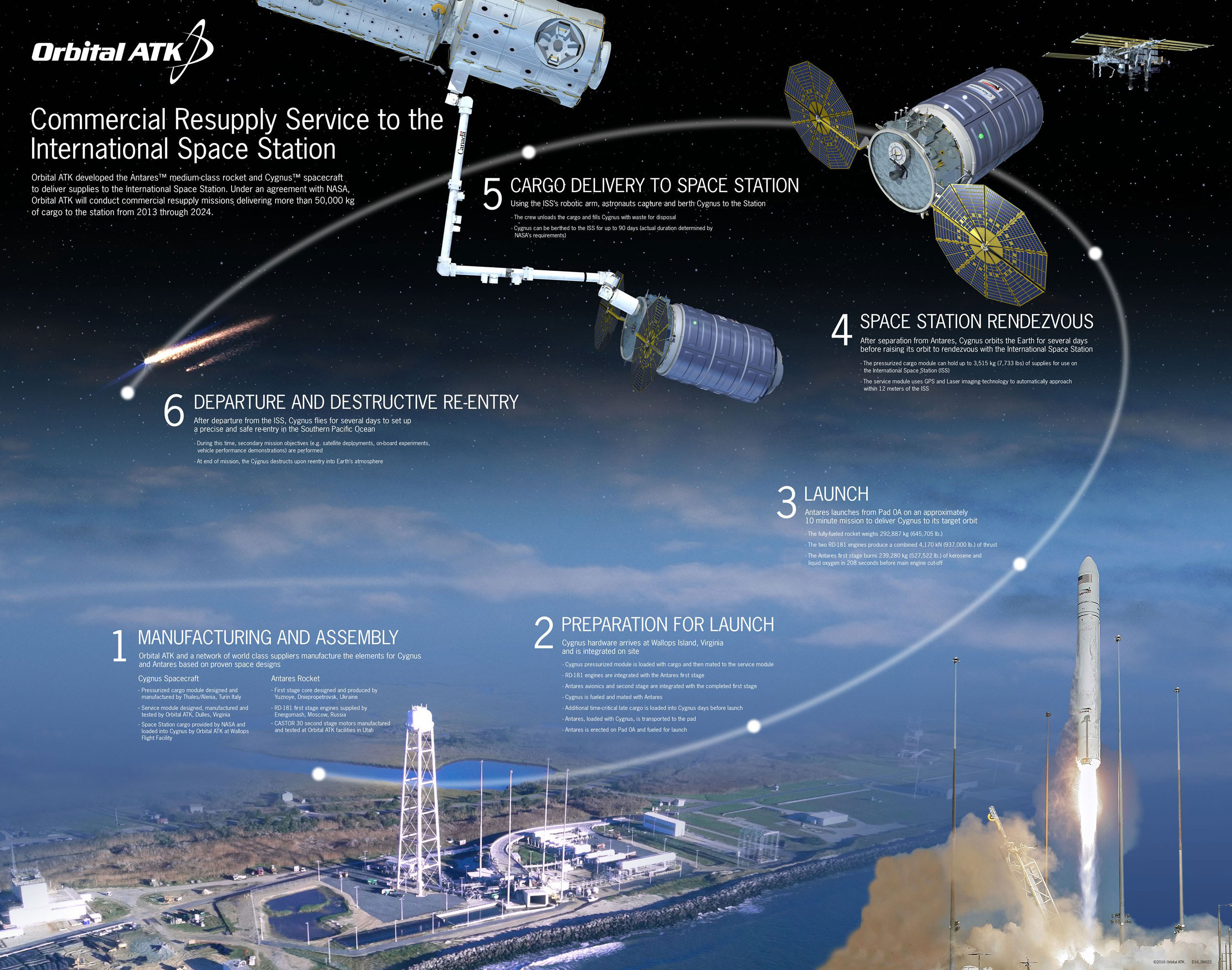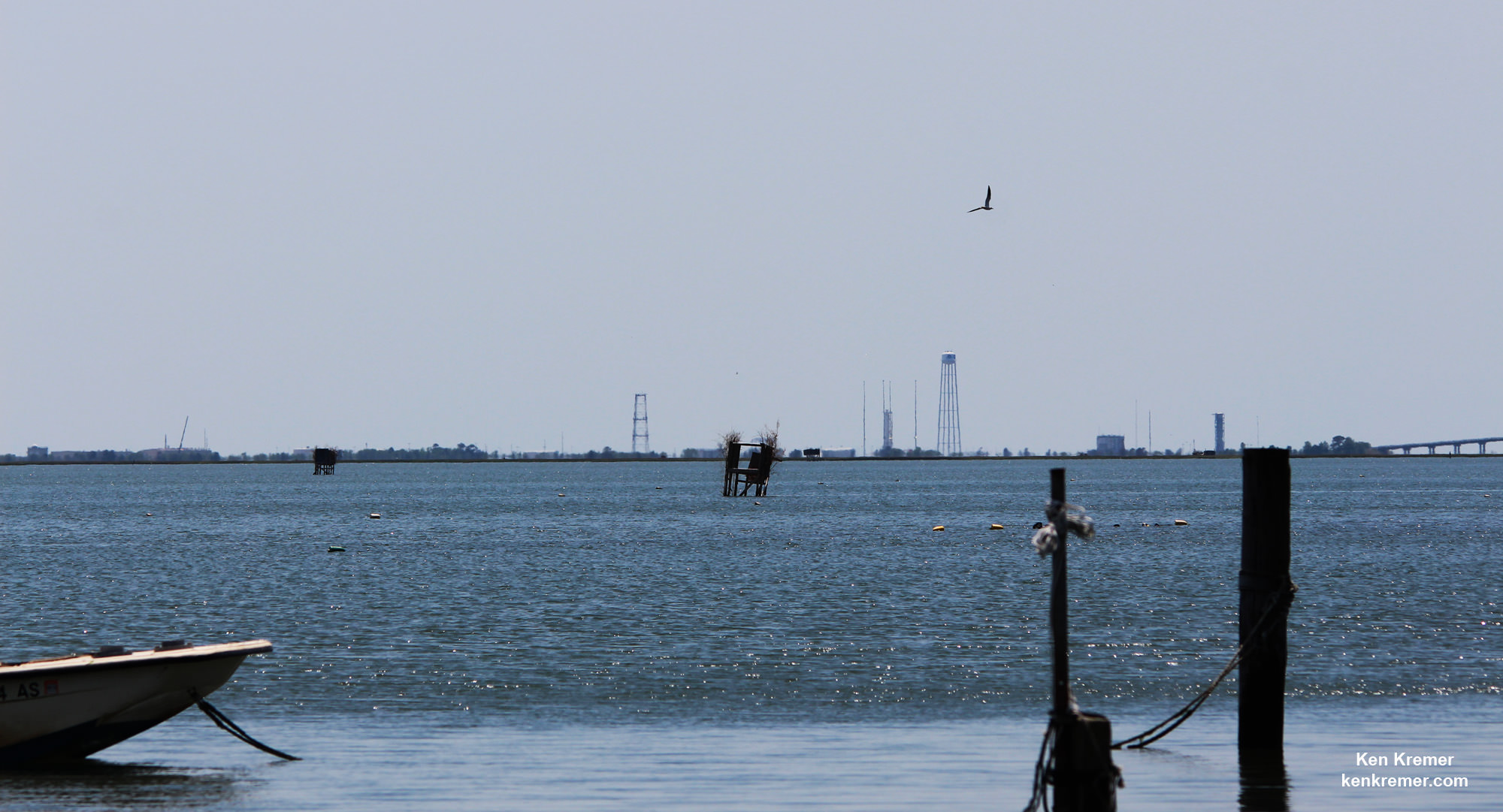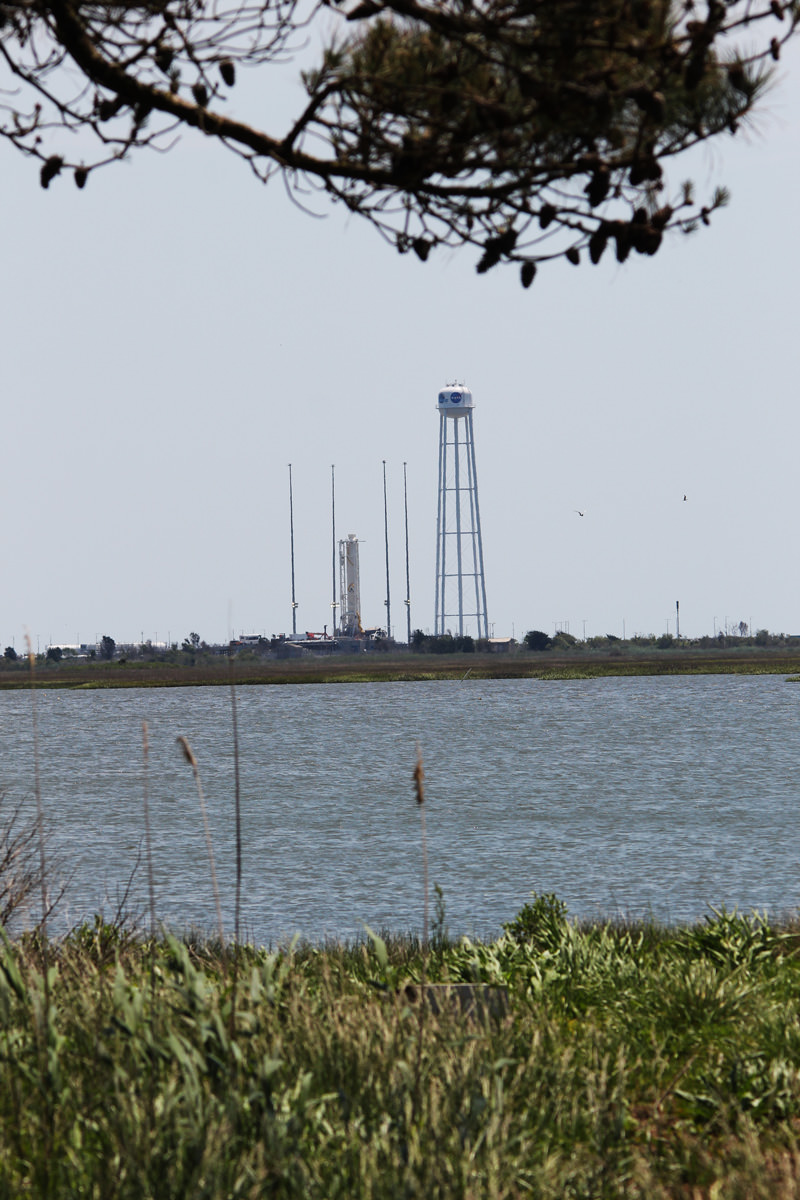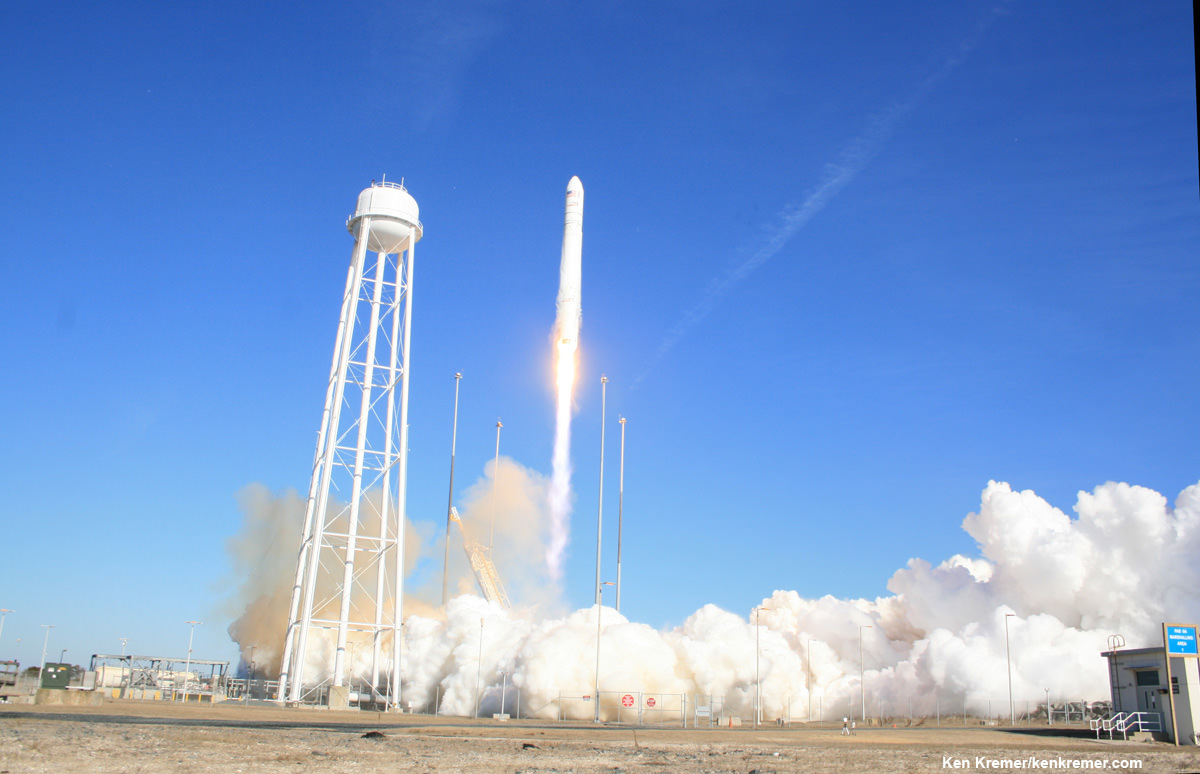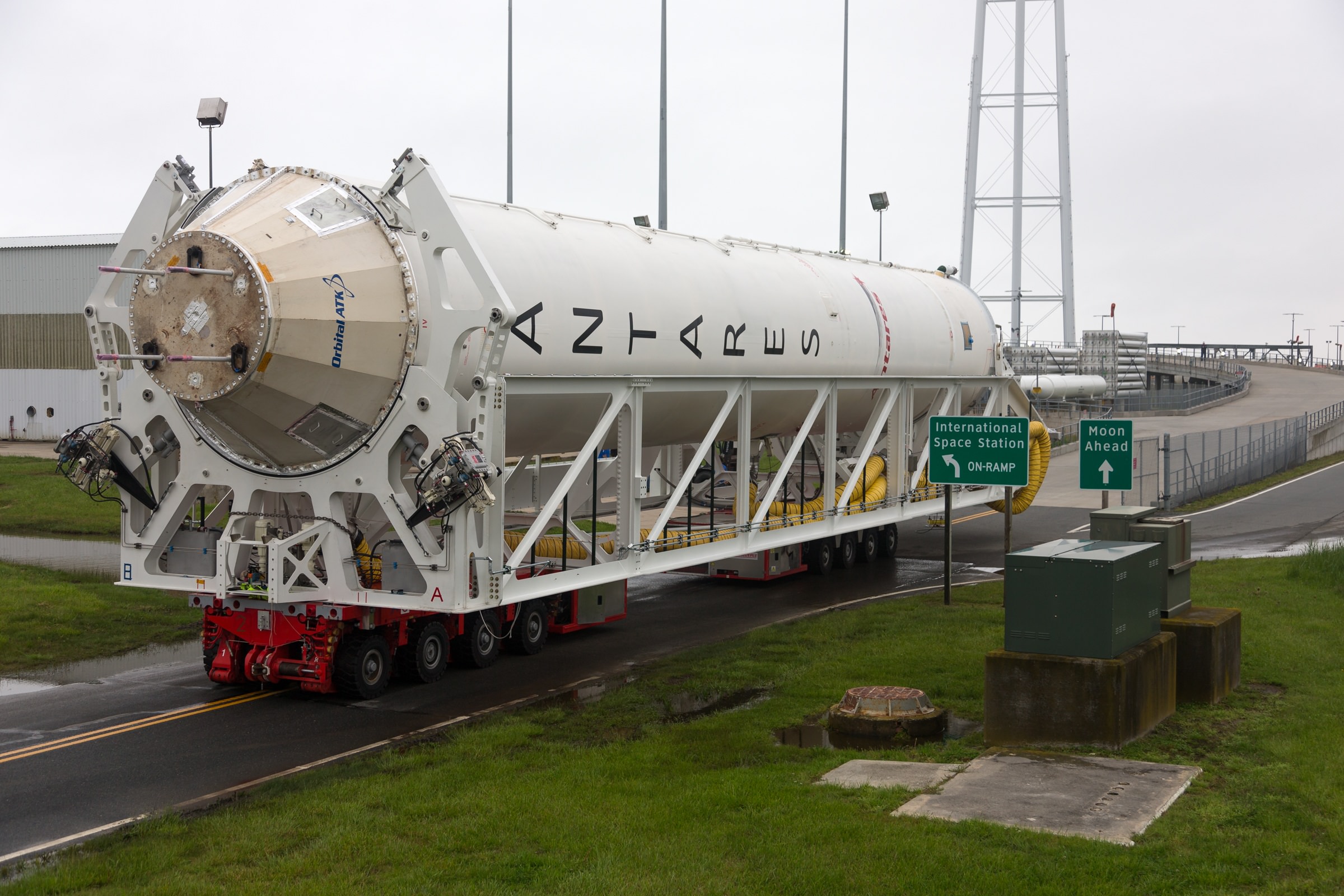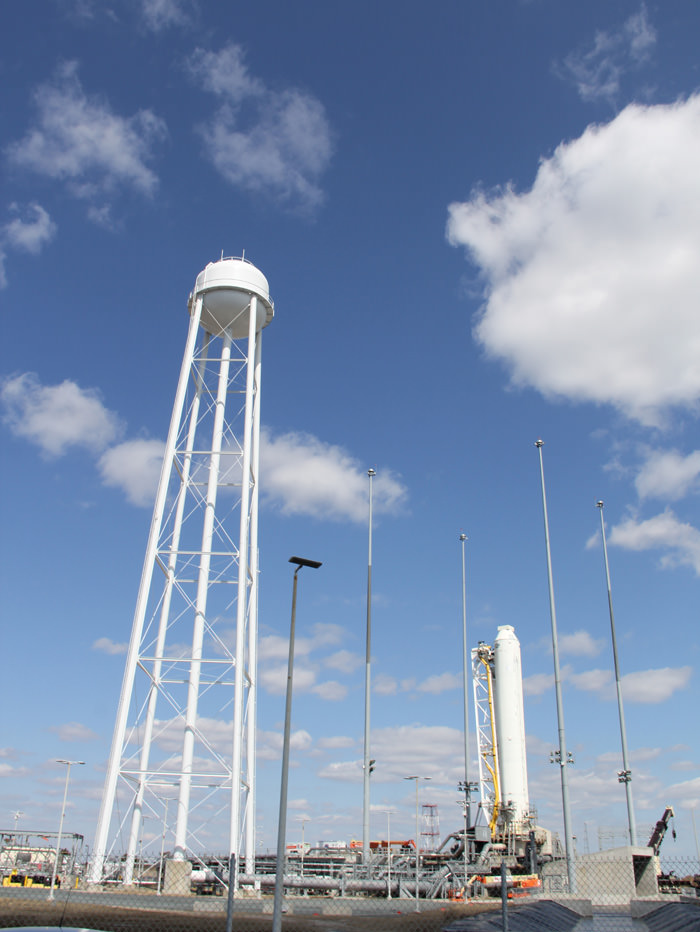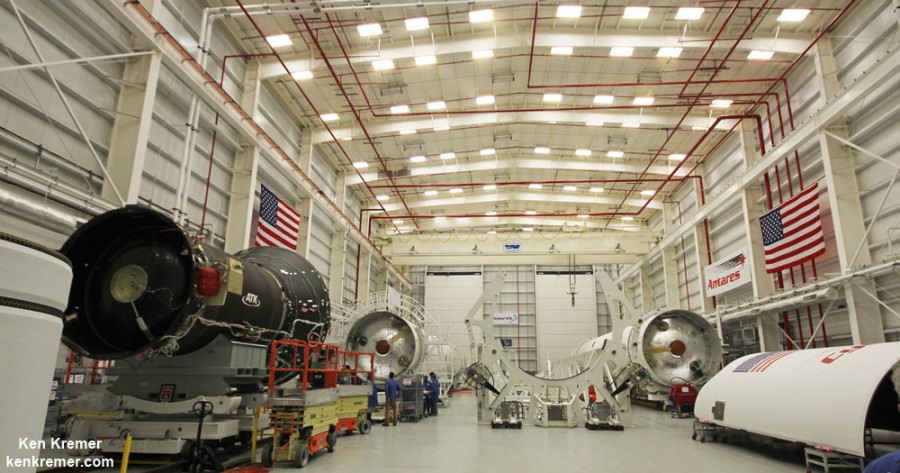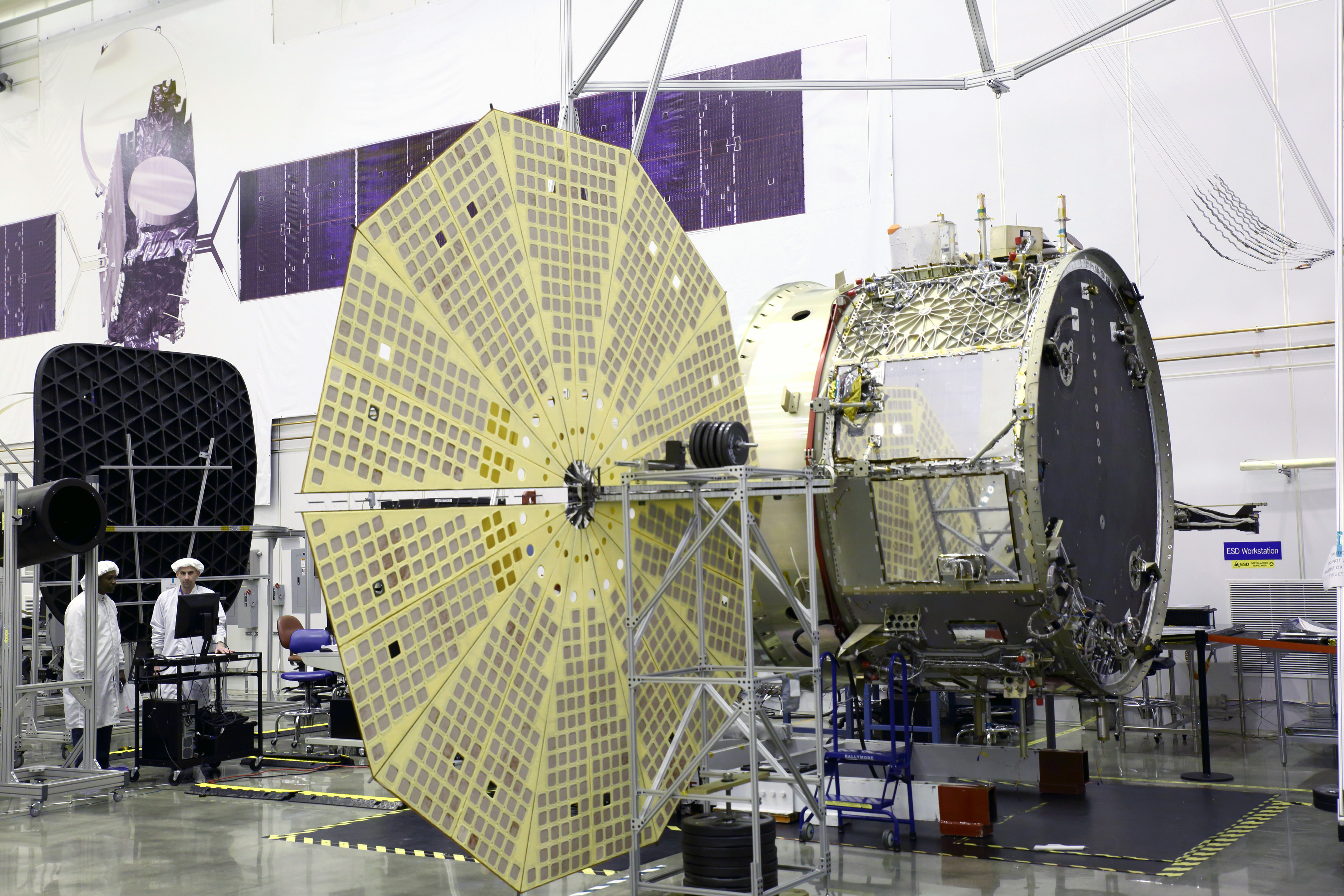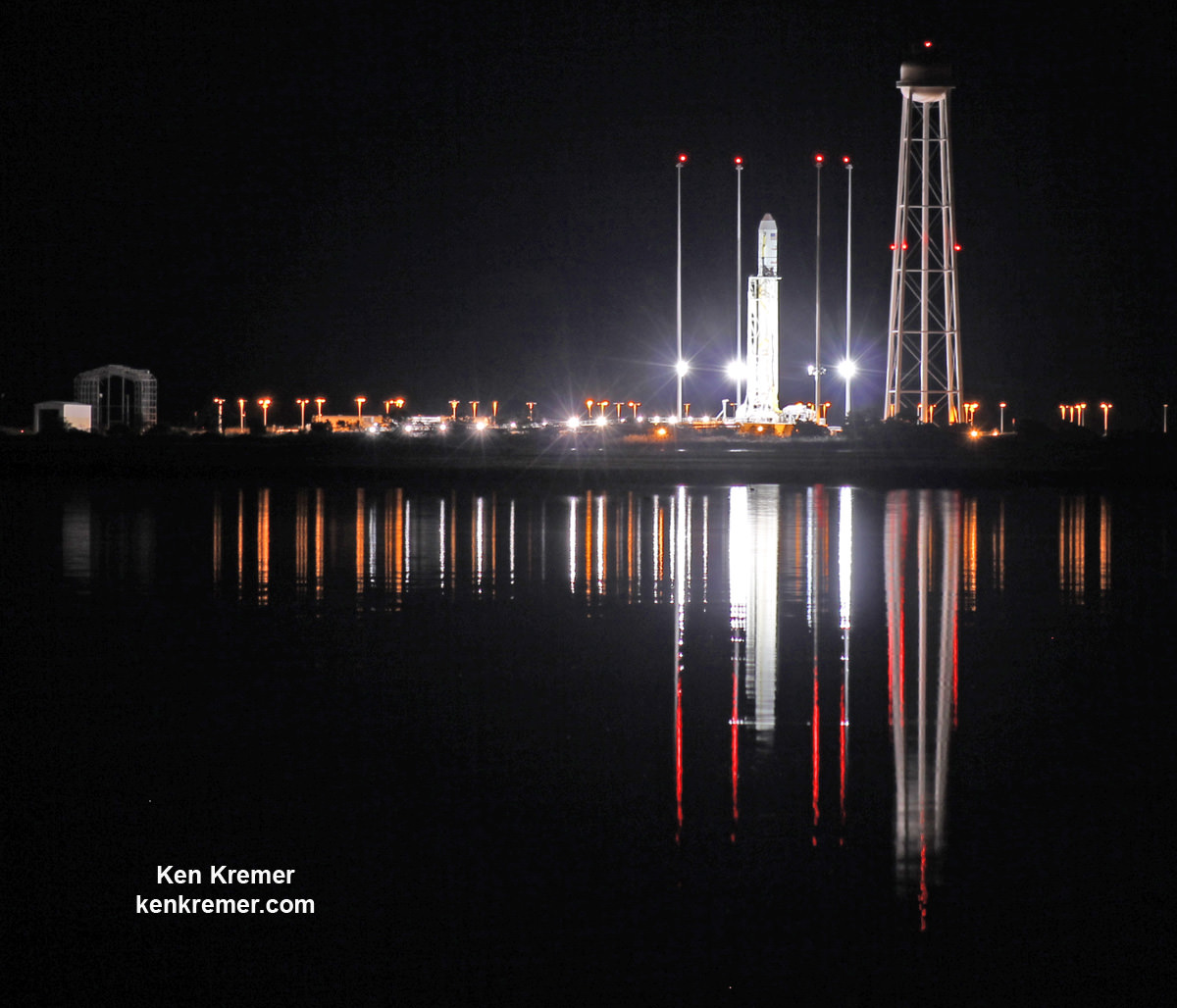
The first Antares rocket liftoff in nearly two years is now being targeted for Oct. 13 on what is sure to be a dazzling nighttime leap from NASA’s Virginia launch base – and potentially offering a thrilling skyshow to millions of US East Coast spectators, if all goes well.
Top NASA and Orbital ATK managers formally approved the launch of the upgraded commercial Antares rocket for next Thursday evening, Oct. 13, on a cargo resupply mission to the International Space Station (ISS). The announcement follows on the heels of a successful joint pre-launch Flight Readiness Review (FRR).
Blastoff of the Orbital ATK Antares rocket is slated for 9:13 p.m. EDT on Oct. 13 from the Mid-Atlantic Regional Spaceport pad 0A at NASA’s Wallops Flight Facility on Virginia’s picturesque Eastern shore.
Antares will be rolled out to the pad 0A on Oct. 11 – two days prior to the anticipated launch date.
Antares will carry the Orbital OA-5 Cygnus cargo freighter to orbit on a flight bound for the ISS and its multinational crew of astronauts and cosmonauts.
The launch marks the first nighttime liftoff of the Antares – and it could be visible up and down the eastern seaboard if weather and atmospheric conditions cooperate to provide a spectacular viewing opportunity to the most populated region in North America.
The 14 story tall commercial Antares rocket also will launch for the first time in the upgraded 230 configuration – powered by new Russian-built first stage engines.
For the OA-5 mission, the Cygnus advanced maneuvering spacecraft will be loaded with approximately 2,400 kg (5,290 lbs.) of supplies and science experiments for the International Space Station (ISS).
“Cygnus is loaded with the Saffire II payload and a nanoracks cubesat deployer,” Frank DeMauro, Orbital ATK Cygnus program manager, told Universe Today in a interview.
Among the science payloads aboard the Cygnus OA-5 mission is the Saffire II payload experiment to study combustion behavior in microgravity. Data from this experiment will be downloaded via telemetry. In addition, a NanoRack deployer will release Spire Cubesats used for weather forecasting. These secondary payload operations will be conducted after Cygnus departs the space station.
If Cygnus launches as planned on Oct. 13, it is scheduled to arrive at the station on Sunday, Oct. 16. Astronauts will use the space station’s robotic arm to grapple Cygnus at approximately about 6:45 a.m. EDT and berth it to the bottom of the station’s Unity module.
NASA TV will provide live coverage of the launch as well as the rendezvous and grappling activities.
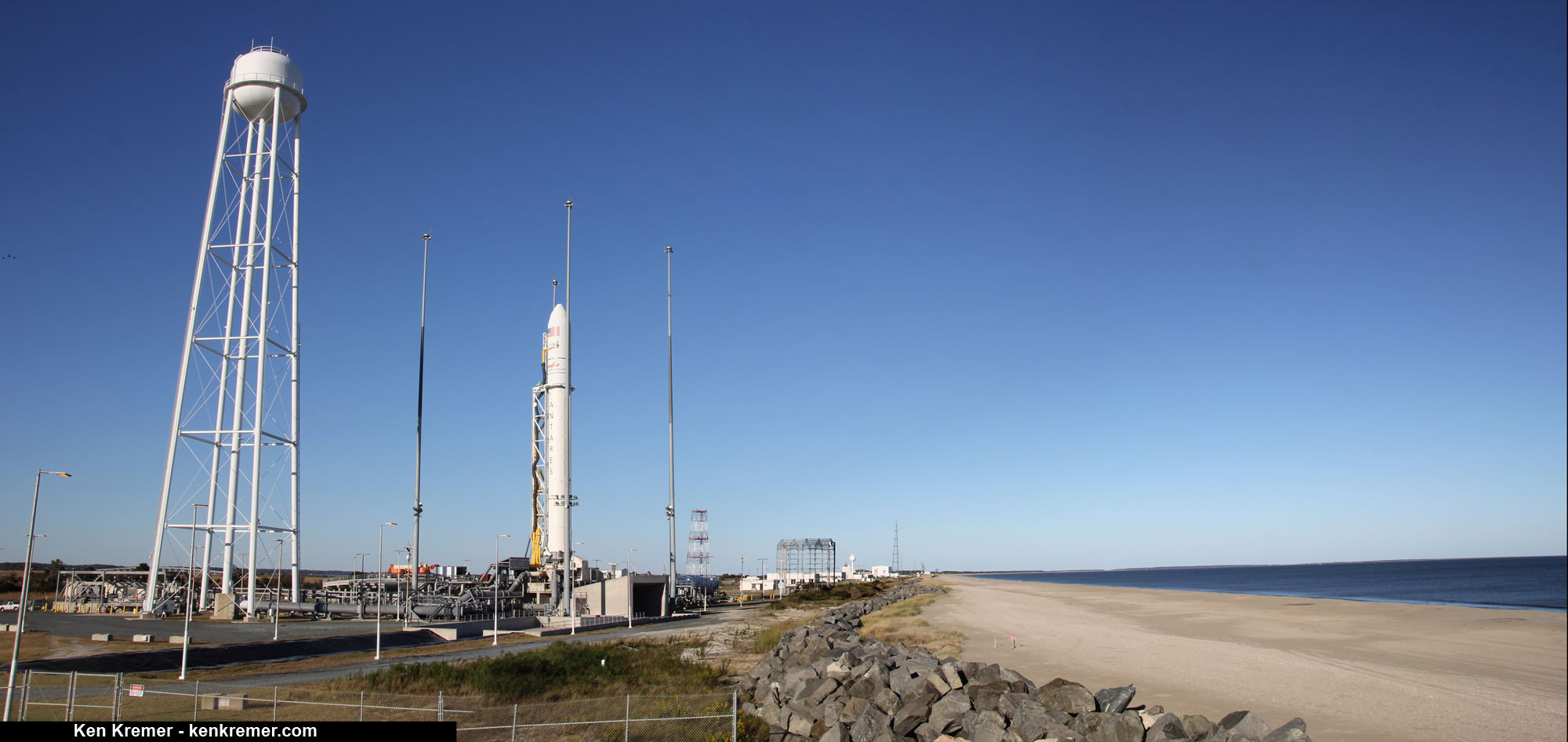
The Cygnus spacecraft for the OA-5 mission is named the S.S. Alan G. Poindexter in honor of former astronaut and Naval Aviator Captain Alan Poindexter.
Under the Commercial Resupply Services (CRS) contract with NASA, Orbital ATK will deliver approximately 28,700 kilograms of cargo to the space station. OA-5 is the sixth of these missions.
The 2 year lull in Antares launches followed the rockets immediate grounding after its catastrophic failure just moments after liftoff on Oct. 28, 2014 that doomed the Orb-3 resupply mission to the space station – as witnessed by this author.

Orbital ATK’s Antares commercial rocket had to be overhauled with the completely new RD-181 first stage engines following the destruction of the Antares rocket and Cygnus supply ship two years ago.

In light of the grounding of the SpaceX Falcon 9 and Dragon cargo flights following the catastrophic Sept.1 launch pad disaster, and the catastrophic Antares launch failure in Oct. 2014, this Orbital ATK mission becomes more critical than ever to keep that station stocked and fully operational for the resident crews with a reliable American supply train.
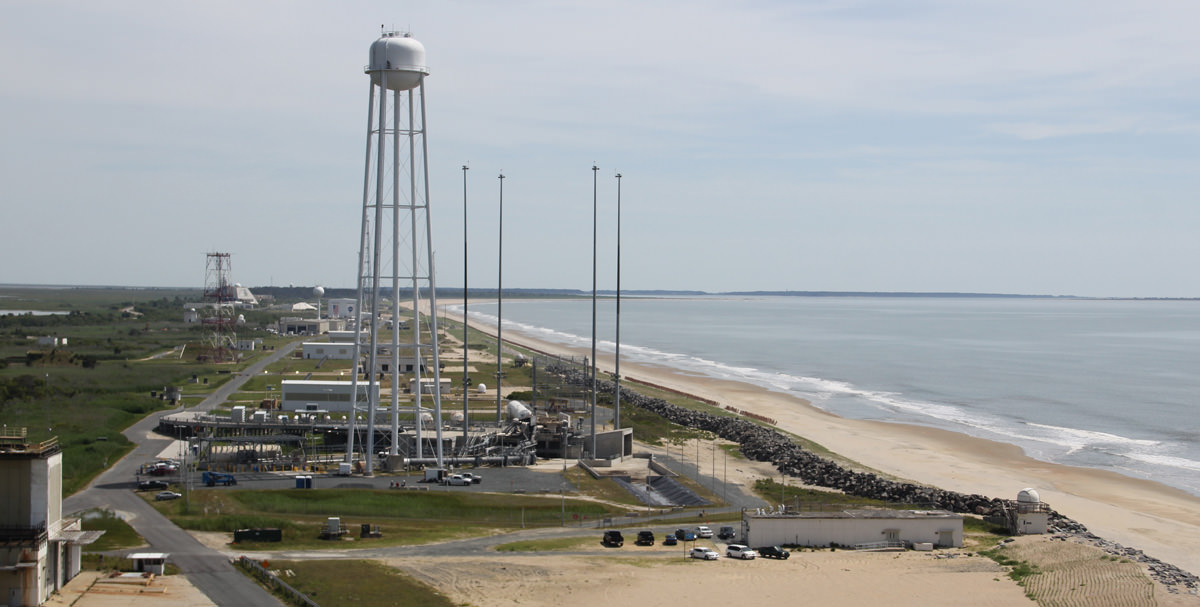
In the meantime, Orbital ATK has successfully resumed launches of their Cygnus cargo freighters to the ISS utilizing the United Launch Alliance (ULA) Atlas V rocket as an interim measure until Antares is returned to flight status
They utilized the ULA Atlas V rocket to successfully deliver two Cygnus vessels to the ISS on the OA-4 flight in Dec 2015 and OA-6 flight in March 2016.
Watch for Ken’s continuing Antares/Cygnus mission and launch reporting. He will be reporting from on site at NASA’s Wallops Flight Facility, VA during the launch campaign.
Stay tuned here for Ken’s continuing Earth and Planetary science and human spaceflight news.


